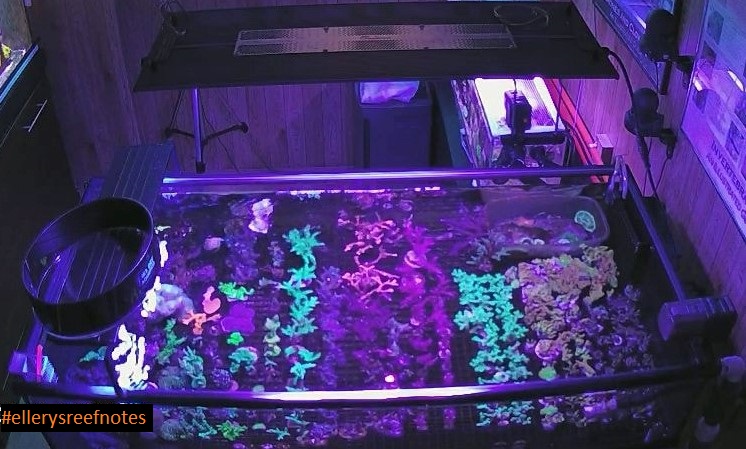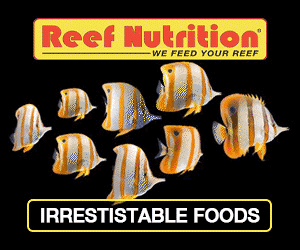
When you become a successful reefer, you’ll find yourself needing to trim your corals to maintain space from the overgrowth. In order to sustain this somewhat expensive hobby and recoup some of the costs, you can sell your coral frags at swap meets. Frag swaps can be as simple as setting up individual trades online and meeting somewhere with a cooler. Medium sized “Old School Frag Swaps” at a hobbyist’s home for BBQ and frags is my preference. Larger more professional events are more prevalent these days, and is where you’ll also find retailers. Any hobbyist can turn their passion into a nice side gig with some effort.
In this article I will bring up some basics that need to be understood for the serious “frag swapper” or “hobbyist vendor”. Ultimately understanding the costs and efforts will determine how much you need to sell to make it worth your time. Just think of it as simplified business case analysis. If you decide it is something to pursue, developing a reusable system to participate in one or more frag swaps annually can make life easier.
If this is your first frag swap, start with a small, manageable setup. Most swaps are only open to prep for 4 hours in the morning and open to the public for the afternoon. The quicker you complete setup the more time the corals will have to settle for proper viewing.
Initial Justification – Do the math…Is it worth it?
- Timeline – How much time is available/needed to prepare for a particular event
- Event Costs = Registration Fees + Transportation + Hotel + Food + Consumables
- Labor = Prep hours + event hours + unpack hours
- Equipment Cost – may be a 1-time cost
- Livestock – What and how much do you even have to sell?
The Devil is in the Details
- Market Research –
- Understand what corals sell in the area (Note: Consumers are looking for bargains or unique items at swaps compared to online or typical LFS prices.)
- Competition: Understand who else is attending the event, what they will be bringing, and their typical online prices
- Pricing –
- Price competitively to sell everything and at minimum cover your justification margin to participate
- Clearly mark and use rounded prices to simplify accounting at the end of the day
- Offer deals (i.e.. Package deals $25/each or buy 4 get one free)
- Constraints – Labor available
- Transport vehicle(s) – how much stuff can you even bring in your vehicle?
- Logistics:
- Understanding the loading/unloading path of the venue
- Amount of space
- Amount of power drops provided
- Location in the venue
- Time of year the event is held – The aquarium hobby tends to be seasonal
- Time: Preparation and travel time and clean up time allotted (Makes for a very long day)
- Hardware Resources
- Shallow AIO frag tanks that are easy to transport and require minimal water
- Lighting fixtures and stands for each frag tank
- Pumps, heaters and filtration material (standalone carbon reactors with foam block work great)
- Frag Racks sized to fit tanks and stackable in sealed transport coolers
- Accessories: coral container cups + lids or bags w/ or w/o rubber bands (@ minimum should match the # of frags brought)
- Power cords and power strips
- Extra saltwater in easily-transportable sealed containers (use existing system water and mix new for forced water change)
- Loading dollies
- Marketing:
- Business sign/banner and stickers (preferred over business cards)
- Payment system – cash box (small bills) and CC/PayPal acceptance system
- Note: presentation and a clean setup matters!!!
- Livestock Preparation:
- A quality practice is to cut and heal frags before selling
- If applicable, inspect / dip wholesale stock well before taking to an event
- Only bring frags that can fit in the original specimen cups or small heat sealed bags for simplicity. This can standardize packaging and prices
- Categorize the proper mix of corals that fit in the available frag plug slots in the frag tank
- Larger LPS corals and colonies will need different shipping and handling strategies
- Create a sequential check list of tasks that need to be completed
- Utopian Setup Strategy –
- Design and build a system that can be packed/transported/unpacked by yourself
- Create an AIO tank/light/stand setup on wheels that can be moved easily. Select a mobile storage and transport cart for everything. Keep it small to fit through standard doorways and enter elevators and your vehicle
- Once onsite, just fill the tank, add frag racks, and power up
- Replicate the system to expand as needed
- A small trailer would be ideal for transporting multiple units if you decide to participate on a larger scale as an ongoing business strategy
Jump right in!
Participating in a frag swap at any level should be a fun learning experience. The comradery of fellow hobbyists at these events is like no other. It may be the closest to a mini trade show some of us get to attend. Whatever you decide, follow the 6P’s (Prior Proper Planning Prevents Poor Performance). You will have a more enjoyable and far less stressful time.










0 Comments